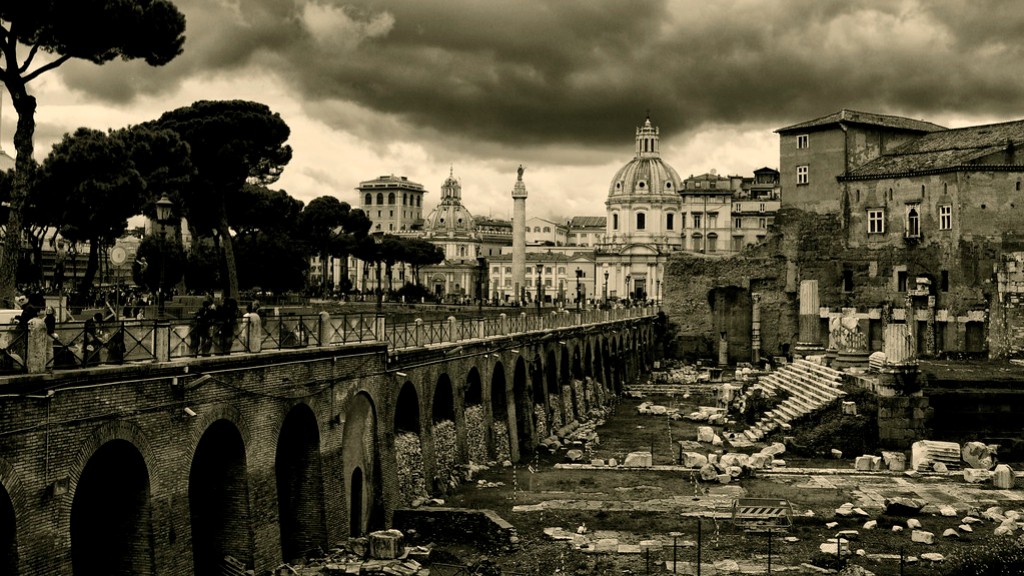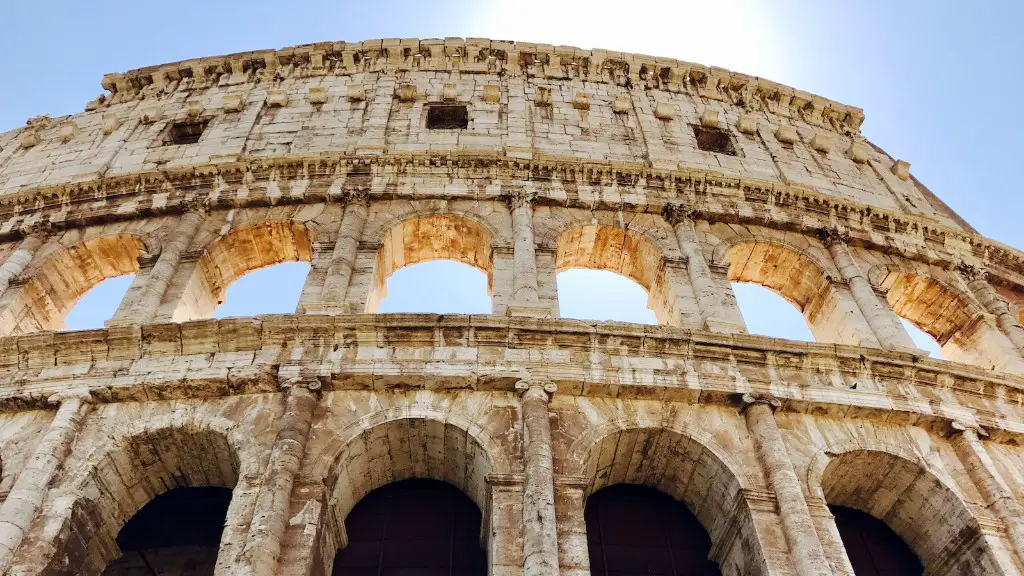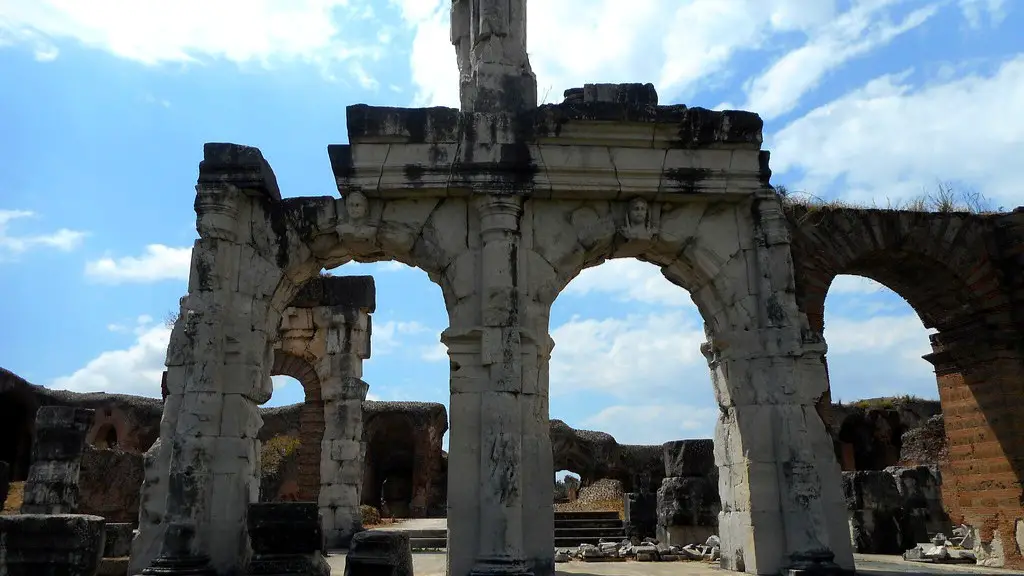Ancient Rome was an ancient city-state located near the Tiber River in modern-day Italy. Founded in 753 BC, Rome was one of the world’s first and largest urban civilizations. It was the home of nearly one million people and was largely influential in the region. At its peak, the city was a hub of trading, culture, religion, and politics. As a result, Ancient Rome was an example of an early republic and democracy.
Ancient Rome had a political structure that was based on the Roman Senate. This institution was made up of men who represented the many districts of the city. Citizens of Ancient Rome had a right to vote and their prefered candidates. Over time, Rome transitioned through a number of forms of government such as oligarchies, monarchies, and military dictatorships. The last of those was Julius Ceasar’s regime.
Ancient Rome was also an example of an expansive and advanced civilization. One of the most recognizable symbols of Rome’s power and advancement was the Colosseum. Constructed in 70-80 AD, the Colosseum was a large open-air venue that was used for gladiator games and other public events. This massive structure proved that Rome was capable of executing large scale construction projects. Furthermore, the Colosseum was used as a status symbol and something to impress foreigners.
Ancient Rome was also home to some of the ancient world’s most influential people. Julius Ceasar was arguably Rome’s most famous ruler and he is credited with turning Rome into a major power in the Mediterranean. His military campaigns and political strategies shaped the area and brought dominion. The famous poet Virgil was also born in Ancient Rome and he authored the famous work “The Aeneid”.
On the religious front, Ancient Rome was an example of a polytheistic society. While the Roman gods were similar to other regional gods, there were important distinctions. Some of the major gods that were worshipped were Jupiter, Juno, and Minerva. Worship of these gods was a major part of Roman life and culture and this religious element was an integral part of public events such as festivals and gladiator events.
Ancient Rome was also an example of a society that was heavily stratified. While there was a nominal citizenship that applied to all, wealthy families and members of the upper classes had much more social status and power. These elites often had access to better education, resources, and a louder voice in society. This power structure was visible in the Roman Senate as members of the upper classes were much more likely to be successful in elections.
Ancient Rome was a major force in the ancient world and an impressive example of the advancement of human civilization. Its lasting contributions to art, architecture, politics, and religion have had an enormous impact on the world and continue to affect us today.
Architecture
Ancient Rome was an example of highly influential architecture and engineering. The Colosseum, mentioned earlier, was a remarkable structure. Additionally, Rome also had many aqueducts, high archways, and bridges. These projects involved a mastery of engineering that was very impressive for the time. Some of these structures still stand today and are tourist attractions.
The Colosseum was not the only impressive piece of architecture in Ancient Rome. The Pantheon was another remarkable structure. This round building was first constructed in 113-271 AD, and it was initially used as a temple dedicated to all the Roman gods. In the centuries after its construction, it was then used as a church and christian temple.
In addition to these large structures, Ancient Rome was a remarkable example of urban planning and creature comforts. Rome had an expansive road system that connected all its districts. Additionally, it was the home of numerous public bathhouses that were used for socialization. These bathhouses were also equipped with heatable floors and hot baths.
Education
Ancient Rome was an example of a society that valued education. Schools were not just reserved for the wealthy, there were also schools for the poor. The educational system was made up of elementary schools and higher education institutions. Elementary schools taught basic literacy and some mathematics. Higher education institutions such as the University of Rome schooled students in rhetoric, literature, and philosophy.
Education was also important for the upper classes and an important status symbol. Wealthy families would employ tutors to teach their children the classics, rhetoric, politics, and military strategy. This attention to education was part of the culture of Ancient Rome and it helped to power its growth and development.
Military and Expansion
Ancient Rome was also an example of a powerful and expansive civilization. Rome had an advanced military force that was able to expand its territories into the Mediterranean and beyond. Julius Ceasar was responsible for one of the major expansions of the Roman Empire which resulted in the annexation of Gaul in 51 BC. Rome was also successful in expanding its borders in Europe, Africa, and the Middle East which allowed it to become a major power in the ancient world.
The Roman military was well adorned and well equipped. Legions of soldiers were armed with javelins, bows, and swords. Rome also had a well-developed navy which incorporated catapults to launch stone projectiles. This military force allowed Rome to defend its borders from outsiders and also expand its borders.
Legacy
Ancient Rome was an example of a powerful and advanced civilization which left a lasting legacy on the world. Its political system, religion, and culture have had a lasting impact on European society and beyond. Many of the political institutions and social norms in modern societies are connected to the Ancient Roman system.
The legacy of Ancient Rome also extended to its art and literature. Its works of art, such as the Colosseum, have become internationally recognized symbols of power and beauty. Its literature also had a lasting impact on the world. Virgil’s book “The Aeneid” is one of the great works of literature and has survived the ages.
Culture and Religion
Ancient Rome was also an example of a society with a rich cultural and religious life. Citizens of Rome would engage in festivities, public displays of power, and religious ceremonies. Major Roman gods were worshipped throughout the city, and temples were constructed in their honour. Worship of Roman gods was a major part of public life and was highly influential on the citizens.
Additionally, Ancient Rome was the home of some of the most influential philosophers of all time. The ancient Roman school of philosophy known as the Stoics was founded in the city and helped to shape the culture of the region. Great names such as Seneca, Epictetus, and Cicero left a lasting legacy that still influences society today.
Economy
Ancient Rome was an example of an expansive and economically powerful society. At its height, Rome had an expansive trading network that stretched from East to West. The city-state traded goods and services with many regions, and this commerce was essential to its growth. This commerce helped to spread its culture and language, and it is also credited with helping to develop certain regions.
At the same time, Rome was also a producer of goods. The region had an expansive agricultural system and was able to produce its own foodstuffs. This provided a steady supply of resources to the trade networks and helped to ensure that Rome had everything it needed. Additionally, Rome also produced luxury and manufactured goods such as perfumes, jewelry, and fine clothing.




